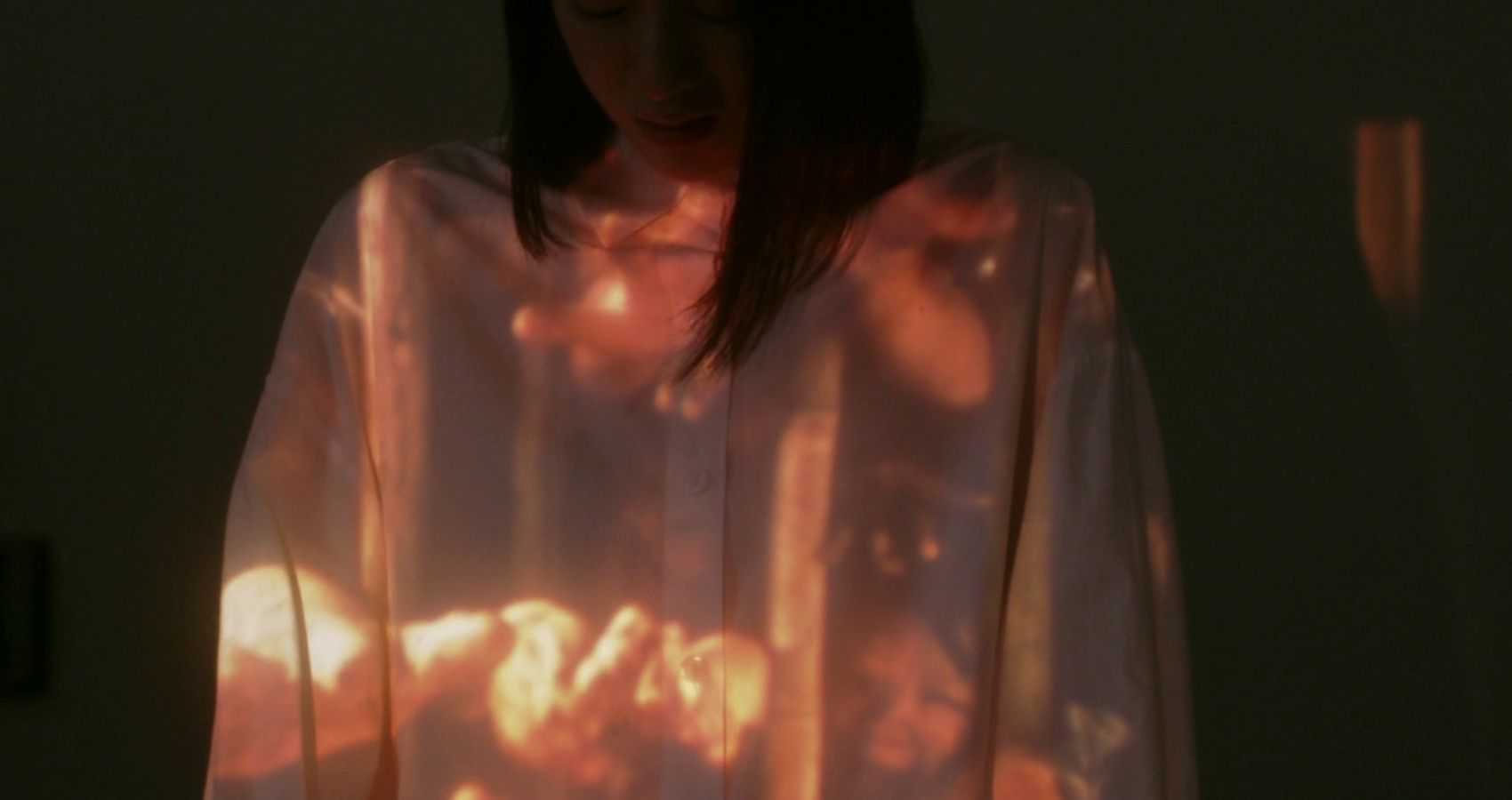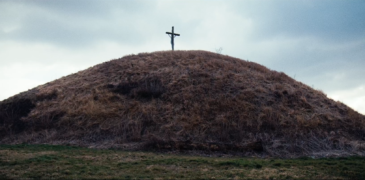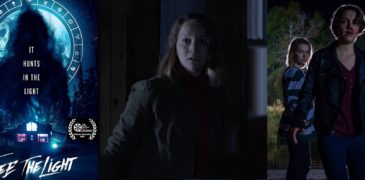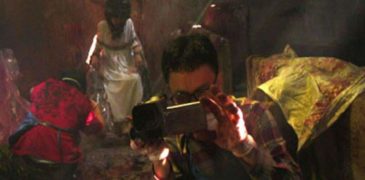
Most fans of Japanese urban legends will already be familiar with the Inunaki Tunnel. For those who are unfamiliar, this tunnel is said to lead to one of the most haunted places in Japan: a place where “The Japanese constitution is not in effect”. I imagine that any film studio with an ardor for horror would jump at the chance to produce a motion picture “based on true events”, but the most vital task in ensuring faithfulness to the source and living up to certain expectations comes down to hiring the right person for the job.
Insert Takashi Shimizu, a man whose name is almost synonymous with J-horror itself and is notorious for creating two of the most distinctive ghosts in cinema history, namely Kayako and Toshio from the Juon series. With a vast amount of folklore to draw inspiration from, you would think that Shimizu-san was the perfect man for the job, right?
Howling Village opens with two characters exploring the Inunaki region in search of an old phone booth that supposedly rings every night at 2:00 am. After the rumors are proven to be true, the couple then makes their way further into the region, eventually finding themselves inside the aforementioned Inunaki Village. The welcoming committee wastes no time introducing themselves to these two tourists and they make it very clear that they are not residents of the land of the living. Our two characters make it out of the village in one piece, but in following the tradition of classic horror tropes, one of them begins to act very strangely back at home.

While the film definitely has some great moments, I’ll admit that I felt surprisingly underwhelmed by the end. The opening sequence is exceptionally solid, utilizing both “found footage” and third person filmmaking to their highest potential, but I found that the rest of the film failed to match the momentum that made this scene so enjoyable. In fact, I would say that I very much enjoyed all of the character stuff in the first two acts, but I was let down when the third act did not mirror the energy of the first.
Audience expectation can often ruin a viewing experience, and it feels almost unfair to say that a film is “bad” just because it did not meet certain expectations. I would certainly never call Howling Village ‘bad’, especially when it has so many good qualities. Fans of Shimizu’s work will instantly appreciate his blink-and-you’ll-miss-it techniques throughout, and there’s even a special extended cameo from actress Megumi Okina that will please avid Juon fans.
This extended cameo is part of a subplot involving one of Kanae’s patients, and it was actually one of the most interesting aspects of the film. It was a very grounded way to demonstrate Kanae’s supernatural abilities and humanize her at the same time. You can really tell she cares about this patient and it really makes you root for her the rest of the film. However, this is also the problem I had with the film; finding this subplot more interesting than the stuff about the village itself is not exactly a positive.

It’s clear that Shimizu had something profound to say in this film (you’ll realize this once you get to the end) and I absolutely love how ambitious his most recent films have been, but I think this ambition is guilty of dividing fans. It seems like a mutual consensus that Shimizu’s latest flicks have failed to satiate the way his first ones did. The same thing can be said about Hideo Nakata, many claim that he hasn’t made a good film since Ringu, which I disagree with, but I digress. Rather than truly focusing on the folklore, Shimizu chose to take the third act in a different direction, one that doesn’t exactly make sense and features some visually creative choices that kind of took away some of the scare factor for me personally.
With that said, the best way to view this film as a fan of J-horror is to not expect it to dive too deep into the mythos of the real Inunaki Village; it instead uses it as a backdrop for a character driven story that suspends reality. This may in fact be the type of film that grows on you once you get over the expectations it set out for itself, but I’d have to get back to you on that after another viewing. I’m sure it must have been quite daunting for Shimizu to make a film based on something so well-known in Japan, but his passion for the genre never seems to diminish, which is why I would still recommend this film to anyone who is curious to see it.
More Reviews:
“South African enfant terrible filmmaker and artiste-cineaste Manus Oosthuizen meets with Rotten Tomatoes-approved indie film critic Babette Cruickshank in an Echo Park sound studio. With key members of Manus’s crew… The Sound of Summer (2022) is a disturbing and suffocating Japanese body horror, written and directed by the UK-born creator Guy (Guy Pearce). Although this film is his debut feature-length… Science fiction, often preoccupied with technology and artificial beings, can sometimes seem overly intricate, neglecting the mundane facets of life. However, this stereotype is not only unfair but also doesn’t… Flee the Light, the first feature film from Toronto-based production company Mythic Trips, is an indie mystical horror-thriller about two sisters who find themselves in the crosshairs of an ancient… Discussions on snuff films will always include the controversial Japanese horror series Guinea Pig, which garnered a cult trailing that even prompted an FBI investigation after its release. However, other… Recently, the “adventure survival” thriller has seen a sizeable spike in popularity. Gone are the nastiness, the unbearable tension, the relentless bad luck and shaking-in-their-boots protagonists of survival classics like…Razzennest (2022) Film Review – A Unique Experiment in Aural Terror
The Sound of Summer (2022) Film Review- Horror in Crescendo
River (2023) Film Review – Down by the River [FrightFest]
Flee The Light Film Review (2021) – Atmospheric, Effective Witchcraft Horror
The Butcher (2008) Film Review – Bleed Like a Stuck Pig!
Fall (2022) Film Review – It’s Lonely at the Top

Your typical ghoul next door; film enthusiast, horror fanatic, J-horror nerd, aspiring horror host, and all around geek. Will likely be found cuddling with their cat and reading an old smelly book, or stuffing their face with popcorn at the cinema!


![River (2023) Film Review – Down by the River [FrightFest]](https://www.grimoireofhorror.com/wp-content/uploads/2023/08/river-365x180.jpeg)


